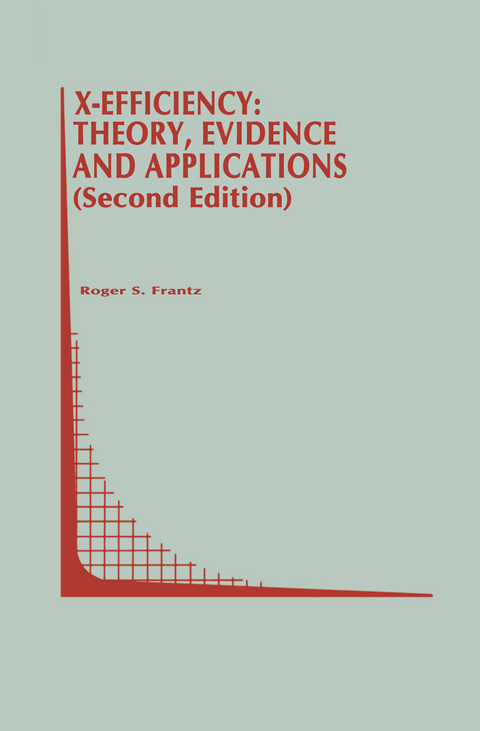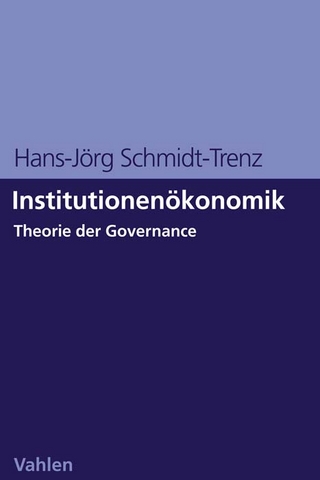
X-Efficiency: Theory, Evidence and Applications
Springer-Verlag New York Inc.
978-1-4613-7875-4 (ISBN)
My interest in X-Efficiency (XE) dates back to 1978. At the time, I was writing the dissertation for my Ph. D. at Washington State University. My dissertation was concerned with the role of attitudes in the school-to-work transition among young men. I was advised by Professor Millard Hastay (a member of my committee) to look at Leibenstein's "new" book, Beyond Economic Man. One of the things that caught my attention was his behavioral description of (selective) rationality. It seemed that Leibenstein' s behavioral description of a (selectively) rational individ ual was very similar to what psychologists such as Abraham Maslow were reporting as being the product of a particular motivational system. In other words, I was impressed with the idea that what Leibenstein was referring to as X-inefficiency was being discussed by psychologists as "the way it (often) is. " So from the beginning I always considered the concept ofX-(in)efficiency to be a valuable one for understanding human behavior. I have since come to believe that this is particularly true when considering behavior in non-market environments, i. e. , within the firm. Work on this book, however, can most realistically said to have started with work which I began in 1982 while I was a Visiting Scholar at Harvard University. Professor Leibenstein suggested that I consider how some empirical evidence which was being cited as evidence for the role of property rights might also be consistent with XE theory. (The consistency, in both directions, is considerable.
1. Introduction.- 1.1. Introduction.- 1.2. X and Allocative Efficiency and the Welfare Losses From Monopoly Power.- 1.3. X-Efficiency and the Neoclassical Production and Cost Functions.- 1.4. The Development of XE Theory.- 1.5. XE Theory and Generalized Neoclassical Theory.- 1.6. XE as a Research Design.- 1.7. Empirical Research on XE Theory.- 1.8. Critics of XE Theory.- 2. Production, Cost, and Welfare: A Review.- 2.1. Introduction.- 2.2. The Firm in the Short Run.- 2.3. The Firm in the Long Run.- 2.4. Firms, Markets, and Efficiency.- 2.5. Implications.- 3. X-Efficiency: The Intellectual Setting and an Introduction to the Theory.- 3.1. Introduction.- 3.2. Complex Objective Functions.- 3.3. Rent-Seeking Behavior.- 3.4. Simon and the Carnegie School.- 3.5. XE Theory: An Introduction.- 3.6. X-Efficiency.- 3.7. Conclusions.- 4. X-EfficiencyTheory: 1.- 4.1. Introduction.- 4.2. The Individual in XE Theory.- 4.3. Conclusions.- 5. X-Efficiency Theory: 2.- 5.1. Introduction.- 5.2. Individual Effort and the Inert Area.- 5.3. Intrafirm Determinants of Individual and Group Effort.- 5.4. Productivity, Effort Conventions, and the Prisoner’s Dilemma.- 5.5. Market Structure, Pressure and Effort.- 5.6. A Synthesis and an Illustration.- 5.7. Implications and Conclusions.- 6. Empirical Evidence: Regulated Industries.- 6.1. Introduction.- 6.2 Empirical Studies.- 6.3 Conclusions.- 7. Empirical Evidence: Market Structure and Firm Organization.- 7.1. Introduction.- 7.2. Owner vs. Manager Controlled Firms.- 7.3. Market and Firm Concentration.- 7.4. Public vs. Private Ownership.- 7.5. Other Ownership Studies.- 7.6. Conclusions.- 8. Empirical Studies: Input Ratios and International Trade.- 8.1. Introduction.- 8.2. Input Ratios.- 8.3. Exports and Effective Protection From Competition.- 8.4.Conclusions.- 9. X-Efficiency, Its Critics, and a Reply.- 9.1. Introduction.- 9.2. Rent-Seeking.- 9.3. Leisure as Output.- 9.4. Management Utility Under Competition.- 9.5. Property Rights.- 9.6. Some General Comments.- 9.7. X-Efficiency and Allocative Efficiency: What Have We Learned?.- 9.8. Conclusions.- 10. Implications and Conclusions.- 10.1. X and Allocative Efficiency.- 10.2. X-Efficiency Theory as a Research Design.- 10.3. X-Efficiency and Its Critics.- 10.4. X-Efficiency Theory and Neoclassical Theory: Some Final Thoughts.- References.
| Erscheint lt. Verlag | 12.10.2012 |
|---|---|
| Reihe/Serie | Topics in Regulatory Economics and Policy ; 23 |
| Zusatzinfo | XIX, 167 p. |
| Verlagsort | New York, NY |
| Sprache | englisch |
| Maße | 155 x 235 mm |
| Themenwelt | Wirtschaft ► Volkswirtschaftslehre ► Mikroökonomie |
| ISBN-10 | 1-4613-7875-3 / 1461378753 |
| ISBN-13 | 978-1-4613-7875-4 / 9781461378754 |
| Zustand | Neuware |
| Haben Sie eine Frage zum Produkt? |
aus dem Bereich


